
Featuring career information from Kyle Much, Agronomist with Knutzen Crop Consulting
- Subject:
- Agriculture, Food and Natural Resources
- Career and Technical Education
- Material Type:
- Other
- Author:
- NWTC
- CESA 8
- Date Added:
- 01/12/2023

Featuring career information from Kyle Much, Agronomist with Knutzen Crop Consulting

AirNow is your one-stop source for air quality data. Our recently redesigned site highlights air quality in your local area first, while still providing air quality information at state, national, and world views. A new interactive map even lets you zoom out to get the big picture or drill down to see data for a single air quality monitor.
AirNow reports air quality using the official U.S. Air Quality Index (AQI), a color-coded index designed to communicate whether air quality is healthy or unhealthy for you. When you know the AQI in your area, you can take steps to protect your health.
AirNow is a partnership of the U.S. Environmental Protection Agency, National Oceanic and Atmospheric Administration (NOAA), National Park Service, NASA, Centers for Disease Control, and tribal, state, and local air quality agencies. Complete list of AirNow partners. Agencies all over the country send their monitoring data to AirNow for display. The Department of State provides data from U.S. Embassies and Consulates to inform personnel and citizens overseas, and the U.S. Forest Service and NOAA provide fire and smoke data.
AirNow’s centralized data system provides quality control, national reporting consistency, and the ability to distribute data to the public, researchers, businesses, educators, and to other data systems. In AirNow, you’ll find:
Current and forecast air quality maps and data for more than 500 cities across the U.S.
Current and historical data for U.S. Embassies and Consulates around the world
Current fire conditions including fire locations, smoke plumes, and air quality data from permanent and temporary air quality monitors
Air quality data for Canada and Mexico
Enviroflash emails, apps, widgets, and an API
Health and air quality information for
the public
healthcare professionals
teachers and students
weathercasters

In Florida's humid climate, strawberry growers are in a constant battle with two kinds of fruit rot. Using a decision support system, they can save money by spraying fields only when the plant diseases are a threat.
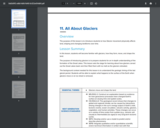
In this lesson, students will become familiar with glaciers, how they form, move, and shape the land.
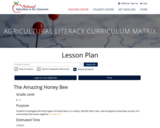
Students investigate the three types of honey bees in a colony, identify their roles, and recognize honey bees as part of a community that works together
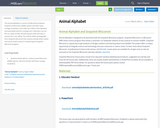
The animal alphabet is a series of slides that introduces students to Wisconsin wildlife species and other basic ecology vocabulary. Each slide has a letter of the alphabet and associated animal or ecology term. Educators can use this as a daily activity, introducing one slide each day, or present all in one sitting. The activity utilizes photographs from Snapshot Wisconsin trail cameras (except where noted) and can be used to assist in introducing the Snapshot Wisconsin program.

Students will take the inforMtion they have learned on animal digestion to create a 3-D model of the digestive system.
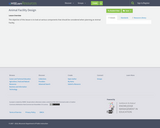
The objective of this lesson is to look at various components that should be considered when planning an Animal Facility.
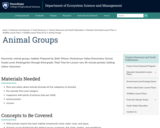
Wild animals require four basic habitat components: food, water, cover, and space.
Animals can be divided into five distinct groups: mammals, fish, birds, reptiles, and amphibians.
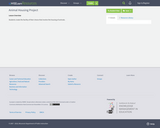
Students create the facility of their choice that involve the housing of animals.
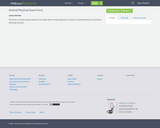
This form is an easy step by step form to follow when introducing how to conduct an Animal Physical on Livestock and Small Animals
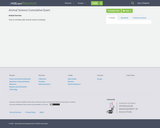
Test to corolate with animal science modules.
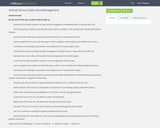
By the end of this unit, students will be able to…- Summarize the steps involved in proper animal management immediately after a cow has had a calf.- List the symptoms of Johne’s and describe ways in which a newborn calf could become infected with Johne’s Disease.- Summarize the method(s) of prevention and treatment for an animal with Johne’s.- List the symptoms of scours; describe ways in which a newborn calf could become infected with scours.- Summarize the method(s) of prevention and treatment for an animal with scours.- Summarize the steps involved in proper management of calves that are 4 days old to 2 months old.- Calculate how much milk a calf should be fed each day based on its birth weight.- Summarize the steps involved in proper animal management of fresh cows.- List the symptoms of mastitis and describe ways in which a cow could become infected with this disease.- Summarize the method(s) of prevention and treatment for an animal with mastitis.- Summarize the processes and factors involved with the Milk Letdown Reflex and describe the importance of oxytocin and cortisol in regards to this process.- Describe how milk should be properly handled and stored once it is collected from the cow.- Define Somatic Cell Count (SCC) and explain its importance to producing a high quality food product.- Define each of the following: heritability; PTA; STA; EBV; sire summary; genetic base.- Summarize how a PTA, STA, and EBV are similar and dissimilar.- Explain how STA scores are calculated and summarize what they mean.- Use given PTA & STA scores for various traits to summarize the genetic value of bulls.- Use a sire summary to analyze the genetic potential value of a bull.- Summarize how the information in a sire summary is generated by describing the process of conducting genetic evaluations.Define each of the following: a. In Vitro Fertilization b. Embryo Transfer c. Genomics
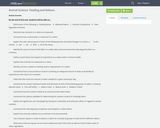
By the end of this unit, students will be able to...- Define each of the following: a. Feeding Ration b. Balanced Ration c. Nutrient Composition d. Total Digestible Nutrients- Describe how nutrients in a ration are measured.- Summarize how crude protein is measured in a ration.- Explain the roles and purposes of each of the following kinds of protein/nitrogen in a ration: a. Crude Protein b. DIP c. UIP d. NPN e. All of the above- Identify the source of most of the fiber in a cattle ration and summarize the roles played by fiber in a ruminant.- Define scratch factor and explain its importance to a ration and to ruminant health.- Explain how minerals are measured in a ration.- Identify concerns related to meeting vitamin requirements of a ration.- Summarize how to ensure that an animal is receiving an adequate amount of water and identify its importance to the ration of a ruminant.- Determine the minimum amount of water needed for a given animal per day.- Summarize the unique nutritional needs and demands of each of the following groups of cattle: a. Growing weaned calves b. First-calf heifers c. Mature Cows d. Mature bulls e. Newborn Calves- Summarize how the nutrient needs of an animal are best determined.- Summarize the options available for determining the nutrient content of a feeding ration.- Explain the significance and role played by land grant universities and extension offices in regards to animal nutrition.- Summarize the role played by ionophores and implants in cattle rations.- Explain how and why acidosis occurs and how it can be prevented.- Use a Pearson Square in order to balance a ration for a variety of groups of cattle and for different rations.- Show how a Pearson Square can be used to determine both TDN ratios as well as Crude Protein ratios of ration ingredients.- Use a Pearson Square to determine if the minimum requirements of an animal are met for a ration in regards to crude protein and determine how much, if any, additional protein is needed for a ration.
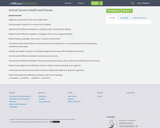
Objectives: by the end of this unit, students will...Describe what it means for an animal to be ‘healthy’.Determine the difference between an infectious and a noninfectious disease.Determine the difference between a contagious and a non-contagious disease.Define: disease, pathogen, host, vector, virulence, environment.Summarize how a host’s defense mechanisms prevent a disease from occurring and why these mechanisms sometimes break down.Identify and explain the parts of a disease triangle and how they affect disease transmission.Summarize the difference between resistance and immunity.Summarize the difference between active and passive immunity as well as natural and artificial active immunity.Explain how antigens and antibodies interact in order to create immunity in an organism.Summarize how herd immunity works and how it affects the health of a group of organisms.Define and explain the differences between each of the following:a. Pandemic b. Endemic c. Epidemic d. Zoonotic

By the end of this unit, students will be able to…- Describe what it means for an animal to be ‘healthy’.- Determine the difference between an infectious and a noninfectious disease.- Determine the difference between a contagious and a non-contagious disease.- Define: disease, pathogen, host, vector, virulence, environment.- Summarize how a host’s defense mechanisms prevent a disease from occurring and why these mechanisms sometimes break down.- Identify and explain the parts of a disease triangle and how they affect disease transmission.- Summarize the difference between resistance and immunity.- Summarize the difference between active and passive immunity as well as natural and artificial active immunity.- Explain how antigens and antibodies interact in order to create immunity in an organism.- Summarize how herd immunity works and how it affects the health of a group of organisms.- Define and explain the differences between each of the following:- a. Pandemic b. Endemic c. Epidemic d. Zoonotic- Identify and categorize each of the following by the unique characteristics and identifying traits:o a. Bacteria b. Viruses c. Fungi d. Protozoa e. Helminth- Define a prion and explain the characteristics that make this class of pathogens unique.- Compare and contrast prokaryotic and eukaryotic organisms.- Summarize how to classify bacteria, including by shape, aerobic/anaerobic, and by gram stain.- Compare and contrast the differences between gram negative and gram positive bacteria, particularly in regards to cell membranes and cell walls, susceptibility to antibiotics, and endotoxins vs. exotoxins.- Compare and contrast the properties of endotoxins vs. those of exotoxins.- Summarize the properties of peptidoglycan and relate how these properties affect the susceptibility of some bacteria to antibiotics.- Summarize the properties and characteristics of the membrane outside of the cell wall of some bacteria in regards to susceptibility to antibiotics, infection of a host, and resistance to host defenses.- Summarize how a bacterial infection can lead to the death of a host via sepsis and septic shock.- Explain why a virus is not considered to be a living species.- Summarize how viral reproduction occurs.- Compare and contrast a retrovirus to a standard virus.- Identify the kingdom of life in which fungi are classified.- Summarize the key traits of protozoa.- Explain how the symptoms diseases caused by helminths differ from many other pathogens.- Outline the method by which a prion causes a disease and identify practices that increase the likelihood of a prion infection.- Describe the existing treatments and/or cures for a prion disease.- Summarize the mechanisms and strategies that comprise each of the following: a. continual forms of nonspecific immunity; b. selective forms of nonspecific immunity; c. specific immunity.- Compare and contrast the properties of the three kinds of continual nonspecific immunity, including: a. mechanical; b. physical; c. chemical. - Summarize the identifying characteristics of all forms of selective nonspecific immunity, including: a. Phagocytosis b. Inflammation c. Pyrexia d. Protective proteins e. NK Cells- Summarize the function of interferons and complement proteins.- Summarize how specific immunity differs from all forms of nonspecific immunity.- Explain how the body uses antigens and antibodies to fight a disease.- Identify the key traits that comprise each of the following: a. Genetic specific immunity b. Acquired specific immunity c. Nonspecific immunity- Summarize the difference between active acquired immunity and passive acquired immunity.- Explain how a vaccination works to reduce the rate of contraction of a disease.- Identify the key characteristics of each of the following kinds of vaccinations:o a. Live b. Killed/Inactivated c. Toxoid d. Biosynthetic- Define colostrum, and explain why it is a valuable part of a production animal operation.- Summarize why adult vaccination is necessary for herd health using examples.- Define VCPR and explain why it is necessary for an animal operation.- Compare and contrast the function and properties of antibiotics and vaccines.- Describe the most common methods by which an antibiotic destroys bacteria.- Describe the most common bacterial mechanisms of antibiotic resistance.- Summarize the difference between Inherent (natural) Bacterial Resistance and Acquired Resistance.
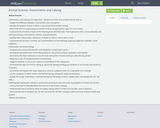
Insemination and Calving Unit Objectives – By the end of this unit, students will be able to…- Explain the difference between insemination and conception.- Identify the window of time in which a cow should be bred after calving.- Determine when it is appropriate to breed a cow by recognizing the signs of a cow in heat.- Summarize the function of each of the following heat detection aids: heat expectancy chart, mount detection aid,tailhead markings, heat detector animals, and pedometers.- Identify when insemination should occur based on when a cow is seen in heat.- Summarize the purpose, function, use, and limitations of the following pregnancy detection methods: rectal palpation,ultrasounds, and blood testing.- Compare and contrast the benefits and drawbacks of twinning in cattle.- Summarize and define each of the following terms: dry period, lactation, gestation, and mastitis.- Summarize the steps necessary to dry off a cow and prevent mastitis during or after the dry period.- Diagnose a case of mastitis based on its symptoms.- Diagnose whether or not a cow is about to calve based on her symptoms.- Summarize the signs of normal calving vs. abnormal calving and diagnose whether or not human intervention isnecessary.- Summarize and explain the steps required to conduct a physical exam on a cow while she is calving.- List the situations in which human intervention during calving will always be necessary.- Explain the proper intervention methods during the following scenarios: upside down calf, backwards calf, calf with ahead/leg bent backwards, calf that is positioned correctly but has not made any progress in at least 30 minutes.- Summarize how to manually dilate the cervix of a cow to aid in calving.- Demonstrate how to properly utilize and apply calving chains in order to assist with cases of dystocia.- Demonstrate how to properly care for the cow and the calf after calving in order to ensure maximal health and preventdisease and infection.
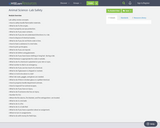
Lab safety review concepts:• How to safely handle flammable materials.• What to do if a fire erupts.• How to properly use eye protection.• What to do if you wear contacts.• What to do if you do not understand directions in a lab.• How to dispose of chemical wastes.• What to do if you do not finish a lab in time.• How to heat a substance in a test tube.• How to pick up hot glass.• What to do if you are injured.• What to do before using glassware.• What to do if you have loose clothing or long hair during a lab.• What footwear is appropriate for a lab or outside.• What to do if a chemical is splashed on your skin or eyes.• What number to dial in an emergency.• What to do if you use too much of a chemical.• What to do if glassware is chipped or cracked.• When is it ok to be alone in a lab?• When lab coats, goggle, and gloves are needed.• What to do if there is broken glass or a spilled chemical.• How to properly handle department animals.• How to respond if an animal escapes.• What to do if you have an injury.• What to do if someone else has an injury.• Number for 911• Where the fire alarms, fire blanket, and fire extinguishers are located.• What to do in a tornado• What to do in a fire• What to do in a Code Red• What to do if you have a question about an assignment.• Where to turn in assignments.• What to do with money for field trips.
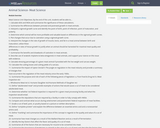
Meat Science Unit Objectives: By the end of this unit, students will be able to…1. Calculate ADG and WDA and summarize the significance of these calculations.2. Summarize the differences between prenatal and postnatal growth in meat animals.3. Interpret a sigmoid growth curve and identify the point of birth, point of inflection, point of maturation, and puberty.4. Determine which animal will be more profitable and valuable based on differences in the sigmoid growth curves.5. Plot changes that occur due to castration using a sigmoid growth curve.6. Interpret the changes in the rate of growth of muscle, bone, and fat in a meat animal between birth and maturation; utilize thesedifferences in rates of tissue growth to justify when an animal should be harvested for maximal meat quality and profitability.7. Summarize the benefits and drawbacks of castration in meat animals.8. Describe use of anabolic implants & beta-antagonists in meat animals, and support your stance on this issue with evidence.9. Calculate dressing percentage of a given meat animal if provided with the live weight and carcass weight.10. Calculate the cutting losses and cutting yields of a carcass.11. Summarize the impact of Upton Sinclair’s The Jungle on regulation in the meat industry and provide a summary of changes thathave occurred in the regulation of the meat industry since the early 1900s.12. Summarize the purpose and role of each of the following pieces of legislation: a. Pure Food & Drug Act b. Meat Inspection Actc. Wholesome Meat Act d. Humane Slaughter Act/Humane Methods of Slaughter Act13. Define “adulterated meat” and provide examples of actions that would cause a cut of meat to be considered adulterated meat.14. Determine whether not federal inspection is required for a given meat processing facility and what this inspection would entail.15. Summarize the stipulations that are required by a facility in order to fully comply with HMSA.16. Compare and contrast what occurs during antemortem and postmortem federal inspection of meat facilities.17. Grade a cut of beef, pork, or poultry based on a picture or written description.18. Define “complete protein” and explain the difference between an essential amino acid and a nonessential amino acid.19. Define “marbling” and summarize the importance of this concept in regards to the quality and value of a cut of meat.20. Summarize how meat changes as a result of the Maillard Reaction and as a result of fermentation.21. Identify the key factors that affect the flavor and quality of a cut of meat.22. Summarize all of the factors that are necessary for muscle to be converted into meat.23. Summarize the importance of tenderness in regards to the value of a cut of meat and describe the factors that affect thetenderness of meat.24. Summarize the role that each of the following play in the sliding filament model: a. Myosin b. Actin c. Troponin/Tropomyosind. ATP e. Calcium25. Identify the components of the sliding filament model in a given image.26. Explain how the sliding filament model, rigor mortis, tenderness, and meat quality are all related.
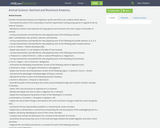
Nutrition & Ruminant Anatomy Unit Objectives: by the end of this unit, students will be able to…- Summarize the extent of the universality of nutrient requirements among living species in regards to the sixkinds of nutrients.- Identify the nutrient most important for living species and summarize the roles it plays in the bodies ofanimals.- List key characteristics and identify the roles played by each of the following nutrients:water, carbohydrates, fats, proteins, vitamins, and minerals.- List key characteristics and identify the roles played by each of the following fat soluble vitamins: A, D, E, K.- List key characteristics and identify the roles played by each of the following water soluble vitamins:a. B12 b. Choline c. Thiamin (B1)/Niacin (B3)- Explain why vitamin C is not needed in the diets of most animals.- List key characteristics and identify the roles played by each of the following macrominerals:a. Potassium b. Sodium/Chlorine c. Sulfur d. Calcium/Phosphorus e. Magnesium- List key characteristics and identify the roles played by each of the following microminerals:a. Iron b. Copper c. Zinc d. Fluorine e. Manganese- Summarize the identifying characteristics of each of the following classes of digestive tracts:a. Ruminant b. Avian c. Post-gastric fermenters d. Monogastrics- Explain the function and characteristics of each of the following organs: a. Gizzard b. Cecum c. Rumen- Summarize the advantages of disadvantages of being a ruminant.- Identify the function of each of the following stomach chambers:a. Rumen b. Reticulum c. Omasum d. Abomasum.- Describe the path of food starting at the mouth and proceeding through each stomach chamber and typeof intestine.- Define “VFA” and summarize its importance to a ruminant.- Identify and explain the roles of saliva in digestion for a ruminant.- Explain the meaning and importance of each of the following for a ruminant:a. Rumination b. Eructation c. Peristalsis d. Papillae e. Villi- Explain the rate at which forage is fermented in the rumen and how it changes inside the rumen during thistime.- Summarize the four key benefits provided to a ruminant by its rumen microbes.- Explain how a calf becomes a ruminant by incorporating the role and purpose of the esophageal groove in anewborn calf and by identifying its source of the rumen microbes.- Compare and contrast the abomasum of a ruminant to the stomach of a human.- Summarize the processes that occur in the small and large intestine that enable digestion and other criticalprocesses.- Diagnose the most likely outcomes for a ruminant for each of the following scenarios:o Iron Or Copper Deficiencyo Manganese Deficiencyo Swollen Large Intestineo Inability To Perform Eructationo Absent Or Swollen Villio Swollen Papillae/Inability To Absorb VFAso Reduced Saliva Productiono Decrease In Rumen Microbe Populations